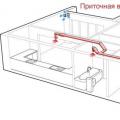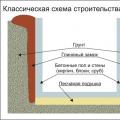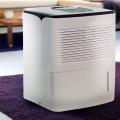Many owners of country houses often live in them only during the warm season, so as not to spend money on maintaining heat in the premises. And all because there is no possibility of connecting central heating - for example, it is very expensive to pull pipes to the nearest settlement where this system is already in place. But there are also alternative options.
Heating the cottage - how to replace the usual sources of heat
Let's try to summarize what is meant by alternative heating. Most often, this term is understood as non-heat-insulated floors, in any of their varieties, whether water or electric, since they are most often connected to centralized heating or the mains. In our case, the key word is "alternative", and any traditional energy sources, whether it be gas, electricity or hot water coming into the pipes from the city mains. Therefore, we will consider those methods that allow you to heat a house in complete autonomy from service providers.
Does the boiler fall into the sector of our interest? Only if it is connected to its own well, and biogas or electricity from renewable sources is used to heat the boiler. As such, they usually mean solar and wind energy, biogas, and geothermal heat. And only in the second place are they economical for generating heat directly, such as infrared panels, underfloor heating, connected to the same renewable sources.
Energy of sun
The most popular solar collectors for heating water. The principle of operation of such structures is to pass a liquid carrier through tubes covered with black paint through a box that is transparent on top, with high-quality thermal insulation on the bottom and sides. In some cases, triplex is used, which better holds the temperature inside the collector. The sun's rays heat the liquid very quickly, while heat is not lost, but rather accumulates. Further, the water can be directed to hot water supply communications or to a closed heating system.
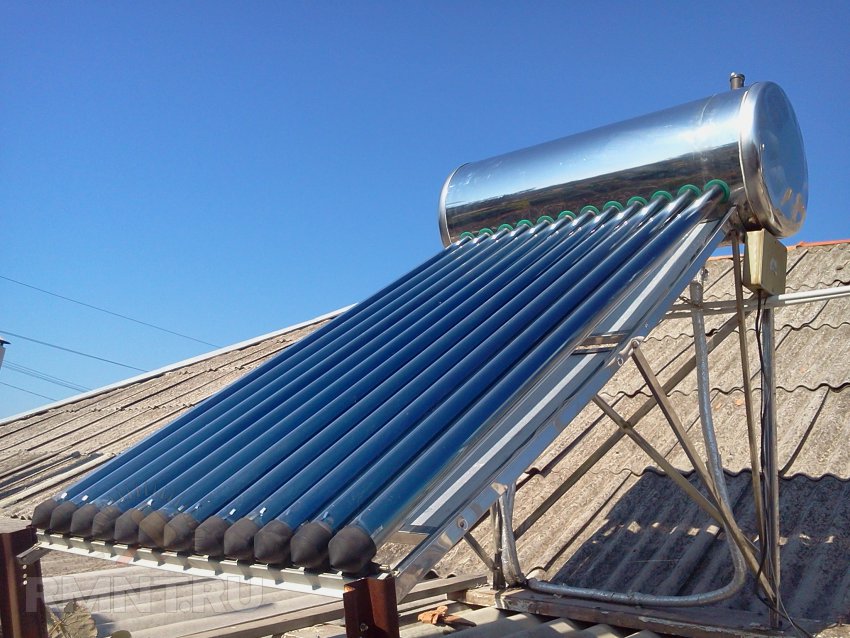
In order for solar collectors to work in winter, you need to install the most expensive option - with vacuum tubes through which coolants are drawn.
But another use of solar energy is also possible - processing it into electricity. To do this, special batteries of photocells are installed on the roof and any other suitable horizontal surfaces, including unoccupied landings and construction sites on the site. Capturing light, they convert it into electricity, which then either enters the battery, from where it is spent on the operation of heating devices, for example, heaters. Or immediately through the stabilizer and inverter to the network. The first device protects against power surges, and the second - to receive alternating current. However, it should be borne in mind that in the latter case, current supply drops are still possible, so it is more logical to use batteries.
Wind to the rescue - we get heat from the air
An excellent option for generating electricity is a conventional windmill. Even where strong movements of the air mass are rare, weak gusts can spin vertically oriented blades that rotate regardless of wind direction. Several such installations are capable of delivering about 2-3 kilowatts, which will fully ensure the operation of an electric underfloor heating or infrared panels. The advantage over solar panels is obvious - there is no dependence on the dark or daylight hours, the wind blows at night. But at the same time, the cost of such a project can be quite high. However, when it is not about the self-sufficiency of a windmill, but about comfort in winter, you can once go for large financial costs.
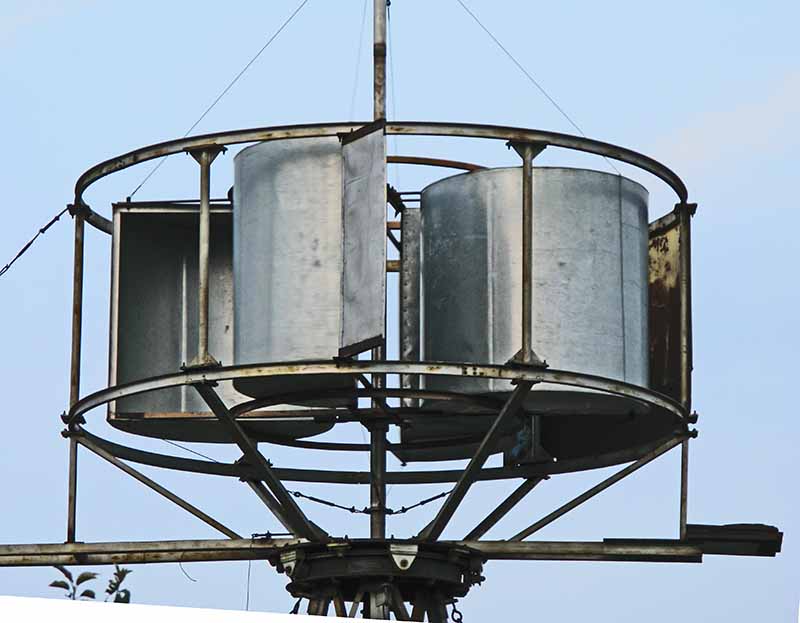
The disadvantage of wind turbines is the need to first obtain electricity, and only then heat. Significant losses are inevitable in such a chain, that is, the system has a rather low efficiency. However, if you make a windmill with your own hands, you can significantly reduce costs and at the same time provide the house with a constant source of electrical energy, from which not only heating boilers, but also household appliances can work. The only condition is that the generator must be placed at a distance of about 100 meters from the house so that the rumble of the blades and the vibration of the rod do not have a negative impact on the nervous system of the residents.
Geothermal heat pumps - heating from the ground
Perhaps this way to heat a house in winter is the most expensive and at the same time the most trouble-free. The fact is that in order to obtain a satisfactory result, it is necessary to lay rather long turns of the coolant. And there are 2 options: vertical or horizontal. The first involves drilling one deep well, about 150–200 meters, or several 50 meters each. That is, you will need the appropriate equipment, and you cannot do without a drilling rig. If funds allow, you can turn to this method, it will provide the house with heat for many decades.
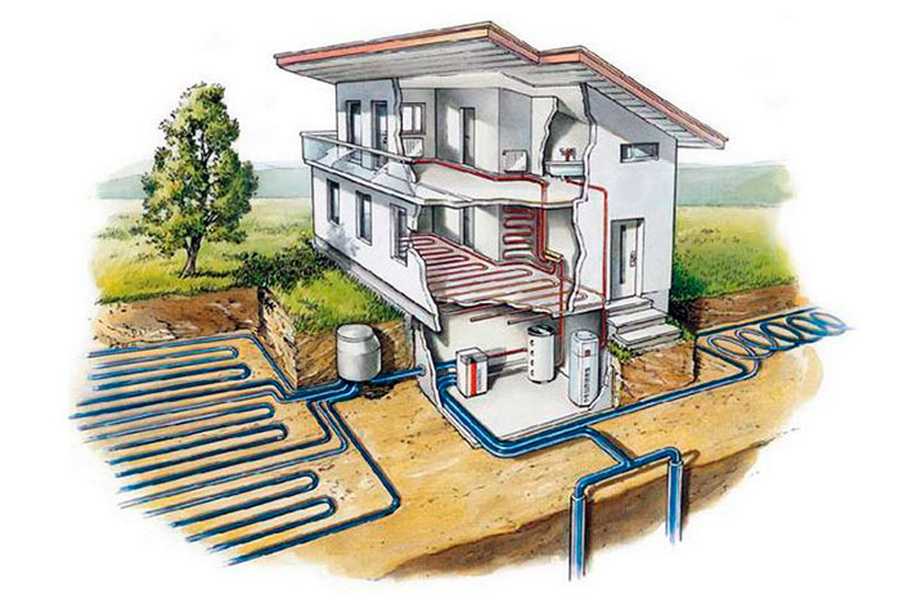
The second option is the horizontal orientation of the geothermal system. In this case, you can do it on your own, since it is only necessary to deepen the turns of the pipe through which water should flow below the freezing level of the soil. It's about 2 meters. But at the same time, it is necessary to cover an area of at least 200 square meters, that is, a plot of about two acres. It will be difficult to arrange plantings there, although if the plants have a superficial root system, it is quite acceptable. Often such systems are laid under the location of an artificial reservoir, which provides even greater efficiency, since water is an excellent heat insulator.
The principle of operation of the system is as follows - cold water, for example, from a well, enters a pipe laid in several vertical turns in wells or laid horizontally in a snake in the soil. The temperature in the deep layers of the soil is always higher than above the surface, and the water gradually heats up, passing cycle after cycle through the entire system. It is logical that forced circulation will require a pump, and this, in turn, will lead to electricity consumption. But in combination with a windmill, this type of heating will work with little or no third-party energy sources.
Biofuel - waste as fuel for the stove
To date, all kinds of alternative heating systems for a private house are being produced in the form of heating stoves for the home, which operate not only on gas or wood, but also on bulk fuels. These are the so-called jet furnaces, one of which is, for example,. A special bunker allows you to lay both wood pellets (pellets) produced in large quantities by many companies, as well as ordinary sawdust, grain husks, wood chips or even straw. Similar furnaces also work on cones, which can be called a renewable source of energy, because they can be collected in the nearest forest in unlimited quantities, storing fuel for the winter.
![]()
The advantage of such heating systems is practically no soot. However, keep in mind that the use of cones leads to the accumulation of soot, which will require additional maintenance, including cleaning the chimney. It is recommended not to use pine cones, since their resin content is very high and soot is formed in very large quantities, which is also harmful to health, because not all combustion products enter the chimney. It is better to take spruce cones for such purposes and dry them well before using them.

